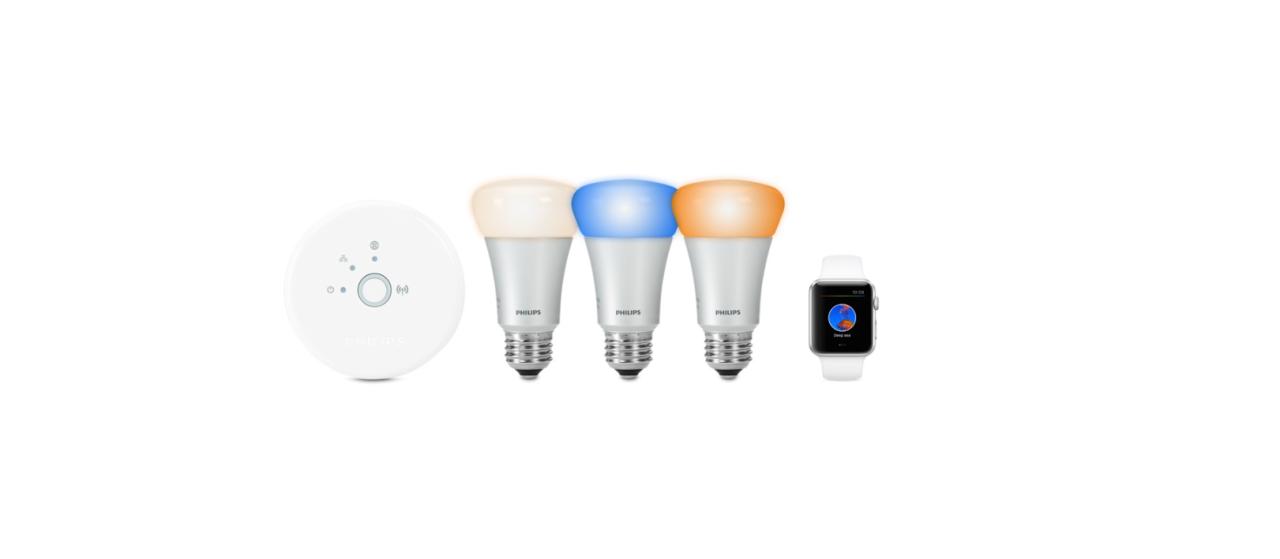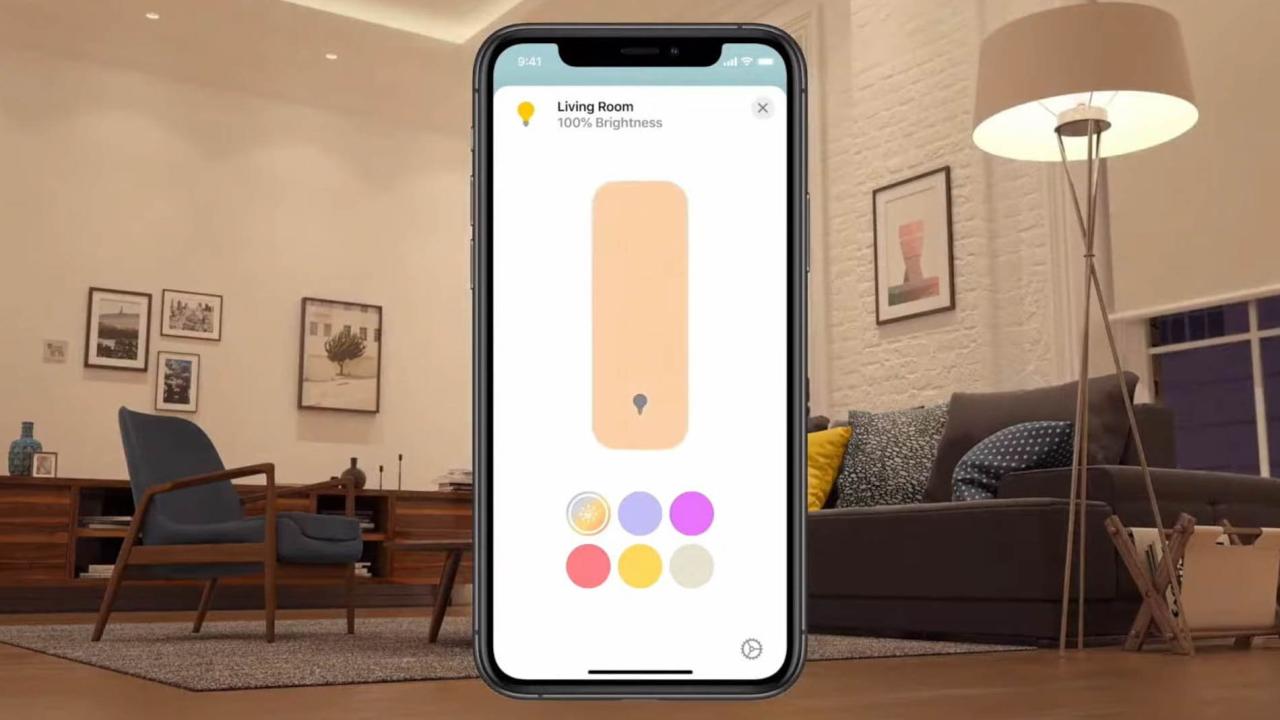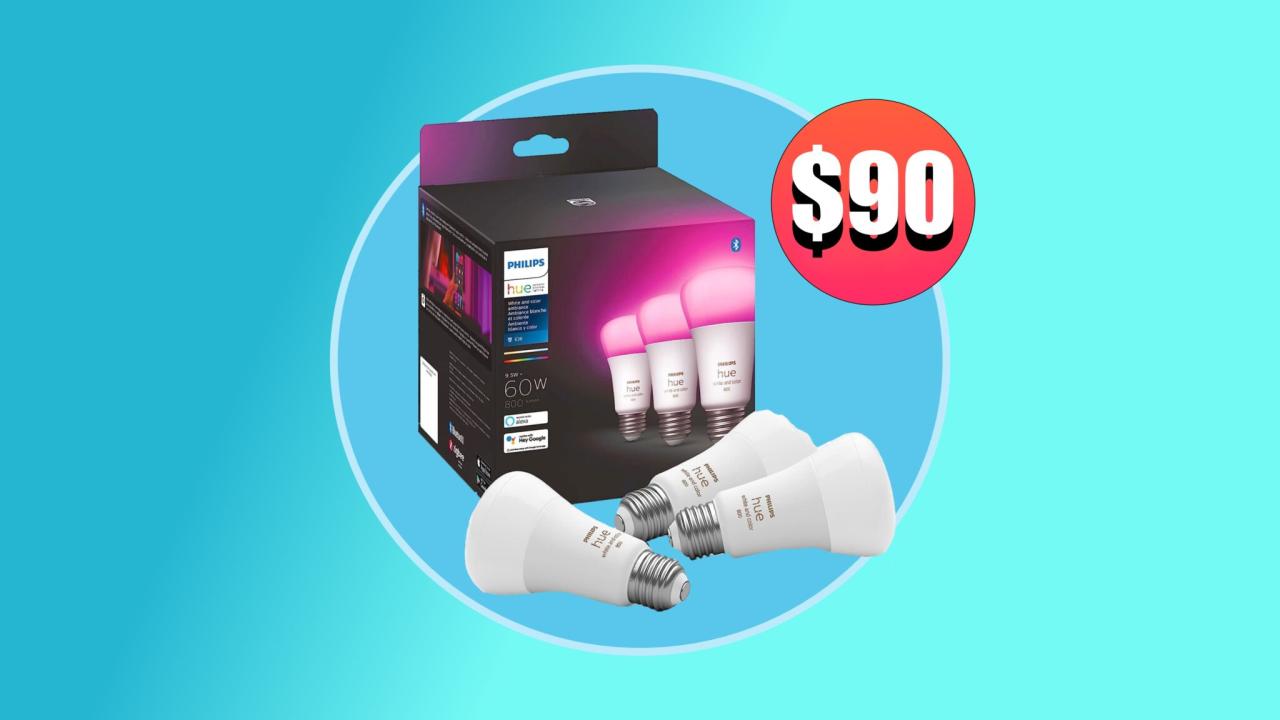Delving into philips hue apple homekit, this innovative integration transforms the way we experience lighting in our homes. With Philips Hue smart lighting systems, users can enjoy customizable, energy-efficient lighting solutions that seamlessly blend with Apple HomeKit’s ecosystem. This combination not only enhances the ambiance of any space but also streamlines smart home automation, making life more convenient and enjoyable.
In this exploration, we will uncover the key features of Philips Hue, guide you through the setup with Apple HomeKit, and dive into advanced customization options that allow for a truly personalized lighting experience. Whether you’re looking to create the perfect mood for a dinner party or automate your lighting based on time and location, Philips Hue and Apple HomeKit together offer endless possibilities.
Philips Hue Overview

Philips Hue represents a leading smart lighting system that combines advanced technology with user-friendly features, designed to enhance the ambiance of any space. By offering a wide range of customizable lighting solutions, Philips Hue provides versatility that caters to various moods and occasions.
Philips Hue is renowned for its vibrant color range, effortless control, and seamless integration with smart home platforms. Users can choose from millions of colors and shades of white, adjust brightness, and set schedules for their lights, all through an intuitive app interface. The system includes smart bulbs, light strips, and fixtures that can be easily installed in any setting without needing specialized tools.
Integration with Apple HomeKit, Philips hue apple homekit
Philips Hue integrates effortlessly with Apple HomeKit, allowing users to control their lighting systems directly from their iOS devices. This integration enhances the smart home experience, providing a centralized hub from which all compatible devices can be managed.
– Siri Voice Control: Users can leverage Siri for hands-free operation, enabling commands like “Turn on the living room lights” or “Set the bedroom lights to 50% brightness.”
– Automation: HomeKit allows users to create automation scenarios where Philips Hue lights can react to triggers such as time of day, location, or other HomeKit-enabled devices.
– Secure Access: Apple HomeKit uses end-to-end encryption to ensure that user data remains private and secure while controlling smart devices.
Benefits of Using Philips Hue with Apple HomeKit
Combining Philips Hue with Apple HomeKit results in numerous advantages that significantly enhance smart home automation.
– Unified Control: Users can manage all their smart devices, including lighting, heating, and security, through a single app interface, simplifying user experience.
– Customizable Scenes: Create personalized lighting scenes that can be activated with a single command, adapting the environment for different activities, such as movie nights or dinner parties.
– Remote Access: Control Philips Hue lights from anywhere in the world with an internet connection, ensuring that users can manage their home’s lighting even while away.
– Energy Efficiency: Smart scheduling and automation reduce energy consumption by ensuring lights are only on when needed, leading to lower utility bills.
In summary, Philips Hue’s robust features, paired with Apple HomeKit’s seamless integration, creates a powerful ecosystem for managing smart home lighting, offering convenience, customization, and control.
Setting Up Philips Hue with Apple HomeKit

Connecting Philips Hue lights to Apple HomeKit allows you to manage your lighting through the Apple ecosystem seamlessly. This integration enhances the smart home experience, giving you control over lighting settings, schedules, and automation directly from your iPhone, iPad, or HomePod.
To ensure a smooth setup process, follow these detailed steps to connect your Philips Hue lights with Apple HomeKit effectively.
Step-by-Step Guide for Connection
Begin by ensuring that you have all necessary devices and applications ready for the integration. Follow these steps for successful setup:
1. Gather Required Devices
– Philips Hue Bridge
– Philips Hue Bulbs or Light Fixtures
– iPhone or iPad with the latest iOS version
– Apple Home app (pre-installed on iOS devices)
2. Set Up the Philips Hue Bridge
– Connect the Philips Hue Bridge to your Wi-Fi router using the Ethernet cable provided.
– Plug in the power adapter to turn on the Bridge.
3. Install the Philips Hue App
– Download the Philips Hue app from the App Store on your iPhone or iPad.
– Open the app and create an account or log in if you already have one.
4. Add Philips Hue Bulbs
– In the Philips Hue app, select the option to add lights.
– Follow the prompts to search for and add your Philips Hue bulbs.
5. Connect to Apple HomeKit
– In the Philips Hue app, navigate to the settings and select “HomeKit & Siri.”
– Follow the instructions to scan the HomeKit setup code located on the Hue Bridge.
– The app will automatically configure your Philips Hue lights into the Apple Home app.
6. Control Your Lights via Apple HomeKit
– Open the Apple Home app on your iPhone or iPad.
– You should see your Philips Hue lights listed, allowing you to control brightness, color, and settings through the app.
Troubleshooting Common Setup Issues
Despite following the setup steps, you may encounter issues during the connection process. Here is a guide to troubleshooting common problems:
– Philips Hue Bridge Not Detected
– Ensure the Bridge is powered and connected to the router properly.
– Restart the Bridge by unplugging it and plugging it back in.
– HomeKit Setup Code Not Scanned
– Make sure you are using the correct setup code from the Bridge.
– Verify you are using the latest version of the Philips Hue app.
– Lights Not Responding in Home App
– Confirm that your iPhone or iPad is connected to the same Wi-Fi network as the Hue Bridge.
– Restart your iPhone or iPad and try accessing the Home app again.
Checklist of Necessary Devices and Applications
Before starting the setup process, ensure you have the following items ready for a seamless integration of Philips Hue with Apple HomeKit:
– Devices Required:
– Philips Hue Bridge
– Philips Hue Light Bulbs or Fixtures
– Wi-Fi Router
– iPhone or iPad with iOS version compatible with HomeKit
– Applications Needed:
– Philips Hue app (available on the App Store)
– Apple Home app (pre-installed on iOS devices)
Having these items ready will streamline the setup process and provide a more enjoyable experience in creating an interconnected smart home environment with Philips Hue and Apple HomeKit.
“Successful integration of Philips Hue with Apple HomeKit enhances convenience and control, making your smart home truly intelligent.”
Advanced Features and Customization: Philips Hue Apple Homekit

With the integration of Philips Hue and Apple HomeKit, users unlock a realm of advanced features and customization options that enhance their lighting experience. This section explores how to create personalized lighting scenes, automate your lighting based on various parameters, and integrate Philips Hue with other HomeKit-compatible devices for a seamless smart home setup.
Creating Personalized Lighting Scenes
One of the standout features of Philips Hue is the ability to create personalized lighting scenes that perfectly match your mood or activity. Whether you’re looking to set a romantic ambiance or create a vibrant atmosphere for a party, customizing your lighting scenes is a straightforward process through the Apple Home app.
To create a personalized scene, follow these steps:
1. Open the Apple Home app on your device.
2. Tap on the “Add” button or the “+” icon to create a new scene.
3. Choose “Add Accessories” and select the Philips Hue lights you want to include in the scene.
4. Adjust the brightness and color settings according to your preference.
5. Name your scene for easy access.
You can also set multiple scenes for different times of the day or specific events. For example, a morning scene might include bright white light to energize you, while an evening scene could emphasize softer, warmer tones for relaxation.
Automating Philips Hue Lighting
Automation is key to maximizing the functionality of your Philips Hue lights. By utilizing the Apple HomeKit, you can set up automation that triggers your lights based on time, location, or specific events, ensuring your home is always well-lit and welcoming.
Consider the following methods for automation:
– Time-Based Automation: Schedule your lights to turn on or off at specific times. This can be particularly useful for simulating occupancy while you’re away.
– Location-Based Automation: Use geofencing to automatically turn on lights when you arrive home and turn them off when you leave. This not only adds convenience but enhances security.
– Event-Based Automation: Integrate your Philips Hue lights with other events, like receiving a notification or an alarm. For example, set your lights to flash red when your smoke detector goes off.
These automation features can be configured within the Home app under the automation tab, allowing for a tailored smart home experience.
Integrating Philips Hue with HomeKit-Compatible Devices
The power of Philips Hue is amplified when integrated with other HomeKit-compatible devices. This allows for a cohesive, interconnected smart home ecosystem that enhances functionality and user convenience.
Consider the benefits of integrating Philips Hue with the following types of devices:
– Smart Thermostats: Sync your lighting to adjust based on the current temperature settings, creating a comfortable environment. For instance, set the lights to a soft glow when the thermostat reaches a desired temperature.
– Smart Speakers: Control your lighting using voice commands through Siri, providing a hands-free experience. You can ask Siri to dim the lights or change scenes seamlessly.
– Security Cameras and Alarms: Connect your lights to security devices to create a visual alert system. For example, set your Philips Hue lights to flash if your security camera detects motion after dark.
Integrating these devices not only enhances the functionality of Philips Hue but also streamlines your daily routines, making your smart home more intuitive and responsive to your needs.
User Experiences and Recommendations
Philips Hue lights integrated with Apple HomeKit have garnered a substantial following, with users praising their versatility and ease of use. This lighting system not only enhances the ambiance of living spaces but also offers a seamless smart home experience. Below, we explore real user testimonials, best practices for optimal performance, and comparisons with other smart lighting solutions compatible with HomeKit.
User Testimonials
Users have shared their positive experiences with Philips Hue and Apple HomeKit, often highlighting how the combination has transformed their daily lives. Many express appreciation for the customizable settings that allow them to adjust lighting based on mood, time of day, or specific activities.
One user remarked,
“The ability to control my lights with Siri is a game changer. I can dim the lights while cooking, all without lifting a finger!”
Another user shared,
“Setting up routines has made my mornings easier; my lights wake me up gradually, mimicking a natural sunrise.”
These testimonials illustrate the convenience and adaptability of Philips Hue in a smart home environment.
Best Practices for Maximizing Performance
To truly benefit from the integration of Philips Hue lights within the HomeKit ecosystem, users can follow several best practices. Implementing these strategies can enhance functionality and user experience significantly.
– Stable Wi-Fi Connection: Ensure your Wi-Fi network is robust and has a strong signal throughout your home. Philips Hue relies on this connection for seamless operation.
– Utilize HomeKit Automations: Take advantage of HomeKit’s automation features to create routines that match your lifestyle, such as turning on the lights at sunset.
– Group Lights for Simplification: Group lights by room or activity in the Home app for easy control and management. This simplifies the process of adjusting multiple lights simultaneously.
– Regular Firmware Updates: Keep your Philips Hue app and bulbs updated to the latest firmware. Updates often bring new features and improve performance.
– Explore Hue Labs: Philips Hue Labs offers experimental features that allow users to try out new functionalities before they are officially released. Engaging with these can enhance your setup.
Comparison with Other Smart Lighting Options
When evaluating Philips Hue against other smart lighting systems compatible with Apple HomeKit, several key differentiators emerge. This comparison highlights both strengths and weaknesses, aiding potential buyers in making informed decisions.
| Feature | Philips Hue | Other Brands (e.g. LIFX, Wyze) |
|---|---|---|
| Color Range | 16 million colors | Up to 16 million colors |
| Integration with HomeKit | Seamless and robust | Good, but may require extra steps |
| Light Quality | High-quality, consistent lighting | Varies by brand |
| Price Point | Higher initial investment | Generally lower but varies greatly |
| Ecosystem Features | Extensive ecosystem with sensors and accessories | Limited integration options |
This comparison indicates that while Philips Hue may have a higher initial cost, it provides superior integration, light quality, and ecosystem support, making it a worthwhile investment for serious smart home enthusiasts.
FAQ Overview
What devices are compatible with Philips Hue and Apple HomeKit?
Philips Hue lights, Apple HomeKit-enabled devices such as iPhones, iPads, and HomePods are compatible, along with other smart home devices that support the HomeKit framework.
Can I control Philips Hue lights remotely with Apple HomeKit?
Yes, as long as you have a HomeKit hub like an Apple TV, iPad, or HomePod, you can control your Philips Hue lights remotely.
Are there any subscription fees for using Philips Hue with Apple HomeKit?
No, there are no subscription fees required to use Philips Hue with Apple HomeKit, although purchasing additional lights or devices will incur costs.
How many Philips Hue lights can I connect to Apple HomeKit?
You can connect up to 50 Philips Hue lights to Apple HomeKit within a single home setup.
Can I create automation routines with Philips Hue and Apple HomeKit?
Absolutely! You can set up automated routines based on time, location, or specific events using the Apple Home app.
The galaxy s 10 plus stands out in the smartphone market with its impressive features and sleek design. Packed with advanced technology, it offers a stunning display and powerful performance, making it a top choice for users who prioritize quality and efficiency. Whether you’re a tech enthusiast or just looking for a reliable device, this model delivers an exceptional experience.
In contrast, the galaxy s 7 remains a classic option for those who appreciate a solid smartphone without the latest bells and whistles. Though it may not have all the cutting-edge features of newer models, it offers a reliable performance and a user-friendly interface that many still cherish. Its sturdy build and dependable battery life make it a worthy contender even in today’s competitive market.